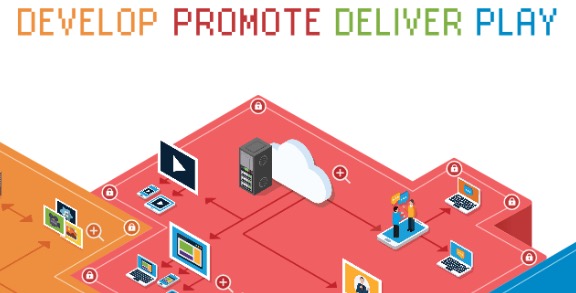Gaming Infrastructure, always scrutinized but always moving forward
 Mike Elissen
Mike Elissen
Back in the 90s, when I first picked up a controller to play, the gaming infrastructure was simple. All I needed was a TV, a console with a controller and either a cartridge or CD to play a game. Simple, but if you were looking to play games with others, you had to have others around (and of course, multiple controllers, sorry Player 2 for ending up with the cheap off-brand controller).
Charging three decades ahead to 2023, we are now living in a world where a game has become an interconnected mesh of different systems, monitoring the health of the infrastructure and the gameplay experience in real-time, all while aiming to have a seamless, low latency, no lag and jitter gaming experience, across millions of connected game sessions, running on virtualized cloud computing technology.
In all of my time as a Developer Advocate working with a variety of industries, I have always felt the life of a gaming back-end developer must be one of the hardest and most challenging jobs out there, especially given the constant pressure of the toughest voices out there, 'the gamer'.

Next week, I will be attending devcom / #ddc2023, which has quickly become the largest gaming development conference across the world and I am excited to return to the realm of gaming development as I have not had the pleasure of attending one since 2019.
Akamai will be hosting a session at the event titled 'Delighting Gamers at the Edge', where you will find me talking to game developers on how to best utilize the Edge to give gamers and game developers the best experience possible.

Looking at 2023 now, I am very happy to see how quickly the industry has led to the creation of tons of battle-tested and player-ready cloud computing solutions that can help game studios figure out these technology challenges and help with building out a scalable gaming infrastructure.
Seeing (indie) game studios, run their entire gaming infrastructure fully on cloud computing or relying on vendors that do the same has opened the door to simply making it easier to focus on building a fun game and not have to worry about all the technical challenges that connecting thousands or gamers simultaneously brings with it.
Looking for a solution that offers scalable, re-useable, virtualized matchmaking and game sessions servers, there are plenty of vendors out there offering their expertise and solutions.
Also, with cloud computing, I am seeing a major growth in 'game observability' platforms that offer real-time monitoring of gaming health, collecting millions of data points that are being fed back into dashboards that LiveOps teams can use to finetune their games.
Whether it is changing the difficulty of a specific boss encounter, changing the spawn points or even from a financial perspective, adapting differing strategies for microtransactions, gaming has completely changed from being just a single person in front of a TV, loading a cartridge, that shipped with a game-breaking bug but of course, no Internet connectivity to patch it within a few minutes.
I am excited to see what the future brings us, gamers and developers, in terms of technologies and challenges to solve that leads to more fun gaming experiences.
First of all, off to Cologne to learn from the best and brightest at devcom / #ddc2023! See you there? And if you are not able to make it, look forward to my blog on my experiences there in two weeks time.
#akamai #ddc2023 #gaming
Subscribe to my newsletter
Read articles from Mike Elissen directly inside your inbox. Subscribe to the newsletter, and don't miss out.
Written by

Mike Elissen
Mike Elissen
In today's world, it is difficult to stay secure with your applications, APIs and data. I can help you. Mike Elissen, Developer Advocate @ Akamai Technologies.